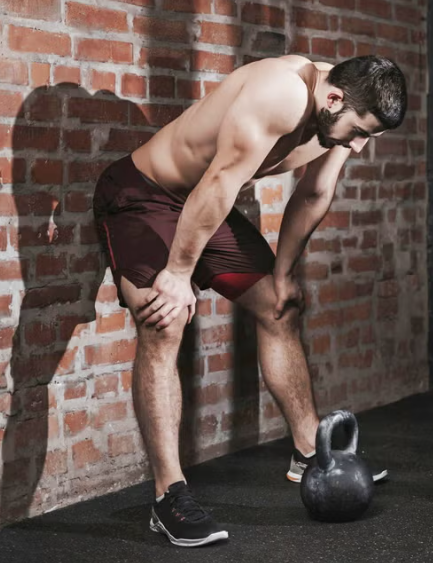
Why Strength Programs Are More Alike Than You Think
In the world of strength training, it’s common to see different coaching methods and training philosophies promoted as the best approach. However, after working with a variety of strength athletes, I’ve come to realize that many of these programs, no matter how different they may seem at first glance, share a lot of the same principles. This is something I’ve observed in my own experience with Boris Sheiko’s training methods and in conversations with fellow athletes who follow Westside Barbell-style programs.
Westside Barbell is a well-known training system that has produced some of the strongest athletes in the world. Even if you’re not familiar with the specifics, a simple Google search will reveal a lot about the gym’s methods, and there’s even a documentary, “Westside vs the World,” that goes into its legacy. While Westside has earned many fans, it also faces its share of critics. This divide prompted the documentary’s title, highlighting the controversy around it.
As someone who follows Sheiko’s methods, a program known for its high volume and focus on the competition lifts, I often find myself in discussions with athletes who swear by Westside’s approach. One coach recently remarked that our training styles were “complete opposites.” But as we dug deeper, it became clear that despite surface differences, our programs are built on very similar foundations. This is true for many successful training systems.
The Basics of Periodization
One key concept that ties many successful strength programs together is periodization. This refers to structuring training in a way that cycles through different phases, such as volume, intensity, and rest, to maximize gains over time. The three main types of periodization that come up in training discussions are:
-
Linear Periodization: This is a straightforward approach where you increase either the volume or intensity of an exercise from week to week. For example, if you’re squatting on Mondays, benching on Wednesdays, and deadlifting on Fridays, you might perform 3 sets of 5 reps at 80% of your 1RM for all three lifts in Week 1, then increase the intensity or volume in Week 2.
The downside to linear periodization is that it can quickly lead to fatigue, especially if the same movements are trained repeatedly. Overuse injuries are a risk, which is why early specialization in a sport is often discouraged. Constantly repeating the same movements without variation can lead to stagnation and injury.
-
Daily Undulating Periodization (DUP): This model alternates between high-intensity and high-volume days throughout the week. For example, a training cycle might have a heavy day followed by a lighter day with more volume. This variation allows for more frequent training without overloading the body, making it easier to train each lift multiple times per week.
-
Conjugate Periodization: Often associated with Westside Barbell, this model involves constantly changing exercises to keep the body adapting. A typical Westside program includes max-effort days, where athletes work up to a one-rep max using a variation of the competition lifts, and dynamic-effort days, which focus on speed and explosive movement using lighter loads.
How These Methods Compare
While Sheiko’s approach isn’t considered conjugate per se, it shares many similarities. For example, Sheiko’s program also incorporates a combination of volume and intensity, sometimes progressing linearly from block to block. However, as we get closer to competition, the focus shifts more towards the competition lifts, and the variations decrease. This shift mirrors the dynamic-effort approach seen in Westside, but Sheiko’s version tends to place more emphasis on technique and form, especially on lighter days.
Just like Westside, Sheiko incorporates variations of the lifts and includes accessories to target weak points. In both systems, the goal is to ensure the lifter can maintain strength while preventing overuse injuries from repetition.
The Role of Variation in Strength Training
Whether you’re following Westside, Sheiko, or any other program, variation is key. A program that lacks variety risks stalling progress. It can lead to adaptive resistance, where the body stops responding to the same stimulus, increasing the risk of injury. Additionally, it’s important to manage fatigue by balancing intense training days with lighter, technique-focused sessions. For example, while I incorporate heavy days and dynamic days like Westside, I also make sure to focus on technique through lighter work and accessory lifts, especially when preparing for a meet.
The Importance of Goal-Oriented Training
One common thread across all these programs is the emphasis on aligning training with specific goals. Whether you’re training for a competition or improving overall strength, the goal should be clear. The purpose of any program is to optimize your performance, but that’s only possible if you understand your long-term objectives.
For athletes looking to compete in strength sports, it’s important to recognize that no single approach is universally better. Instead, what matters is how well a program aligns with your goals and adapts to your body’s needs. While differences in methods exist, the core principles—periodization, variation, and technique—are shared across nearly all successful programs.
Conclusion
When evaluating strength programs, it’s easy to get caught up in the differences. But when you step back and look at the big picture, the underlying principles of successful training are often very similar. Whether you’re following Sheiko, Westside, or another system, focusing on the right balance of volume, intensity, and variation will lead to progress. So, before dismissing a training style that seems different from yours, consider how much overlap there might be. In the end, we’re all working toward the same goal: becoming stronger.




